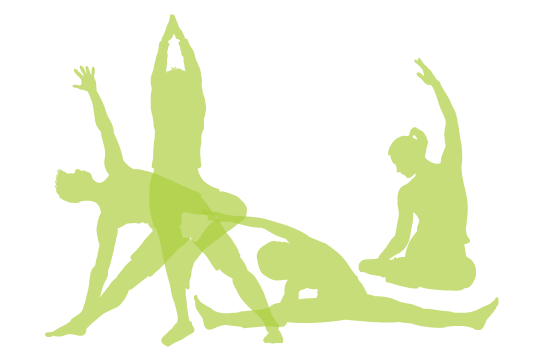Yoga Styles
Choosing a Yoga Class
How do you Choose?
You can be forgiven for being confused over what yoga actually is since there are so many different styles. At one end of the spectrum you have ones like Hot Yoga and Ashtanga which are very high energy and at the other you have Yin Yoga and Restorative Yoga which are very grounding with not much movement at all.
Then you have all the variants in between including ‘yoga’ taught at the gym which can be a bit hit or miss depending on if the instructor has had proper yoga training. On saying that I’ve experienced some great yoga teachers via gym membership so I don’t rule this out. Just that some gyms will have their instructors cover yoga where it’s really just an exercise class, which obscures it even more.
All the asanas (postures) are the same though performed differently and some styles concentrate more on the breath, some more on spirituality and some more on meditation. Most styles will have a combination and cover all the 5 Koshas (layers from physical to spiritual). Then on top of that teachers from the same school will have their own individual ways of teaching. So really no two yoga classes are the same. It’s best if you are new to yoga to try a few different styles and see what resonates with you. None of them are better than the other, just different.
But here is a brief outline of the main styles. It’s just a short description to give an insight rather than delving deeper into the origin and ethos. The list isn’t exhaustive either by no means though covers the more common styles. I’m aiming to go from the most energetic to the most restorative but they do overlap.
Ashtanga
Ashtanga yoga is structured, fast paced and vigourous. There is an emphasis on body alignment and movement with breath. The same poses are performed each time with the intension of perfecting them. It can be a physically demanding workout.
Bikram
Bikran yoga is done in a hot studio with very high temperatures. It can be physically demanding. This is intended to replicate the climate of India. Sessions consist of a fixed sequence of 26 postures.
Hot yoga
Deriving from Bikram Hot yoga is also done in a room with a high temperature and is also meant to replicate the heat in India. This high temperature relaxes your muscles for a more intense workout. The temperature isn’t just as hot as in Bikram and the poses aren’t always the same.
Kundalini
Kundalini yoga works on your ‘Kundalini’ energy which is thought to be lying dormant at the base of your spine, and aims to move this ‘coiled snake’ energy upwards from the root chakra to the crown chakra through your spine. This is done mainly by repetitive movements, breath work, sound, meditation, mudras and mantra.
Forrest
Forrest yoga consists of the four pillars of breath, integrity, strength and spirit. It incorporates the physical, mental, emotional, and spiritual aspects of humanity, and links them through its 4 core pillars for a more profound and holistic evolution. It can be intensely physical.
Iyengar
Iyengar Yoga works on stability and structural alignment of the physical body within postures. It is very precise and uses props and sequencing. The poses are held rather than flowing.
Vinyasa
Vinyasa yoga, to sometimes referred to as flow yoga works with continuous movement. Flowing from one pose into another using the breath without holding. It has an emphasis on mobility and strength. Sun salutations are vinyasa.
Seasonal
Seasonal yoga emphasises an alignment with the changing energies of the season. It combines Yoga and Qigong with Traditional Chinese Medicine ideas about the changing nature of the seasons around us and the meridians of the 5 Element system. So a summer class will be the opposite to a winter one and a variety in between. Although an emphasis on energy it encompasses a mixture of flows as in Vinyasa, and held poses as in Hatha. It also has elements of Yin and Restorative yoga depending on the time of year.
Hatha
Hatha yoga focuses on posture and breathing techniques, traditionally to channel vital energy source. It encompasses the breath, body, and mind. Therefore classes entail breathing, held poses, and meditation.
Yin
Yin Yoga is a slow-paced style of yoga with passive, longer-held poses. Sometimes up to 5 minutes. It targets our connective tissues, the deep fascia networks of the body and the meridians. Rather than other types which targets the muscles. It improves the energy flow, enhancing the flow of chi in the organs.
Restorative
Restorative Yoga holds the poses for even longer and sometimes up to 20 minutes. The poses are very passive and focus on comfort so a lot of props are used. It works on restoring balance to the nervous system as well as your energy.

